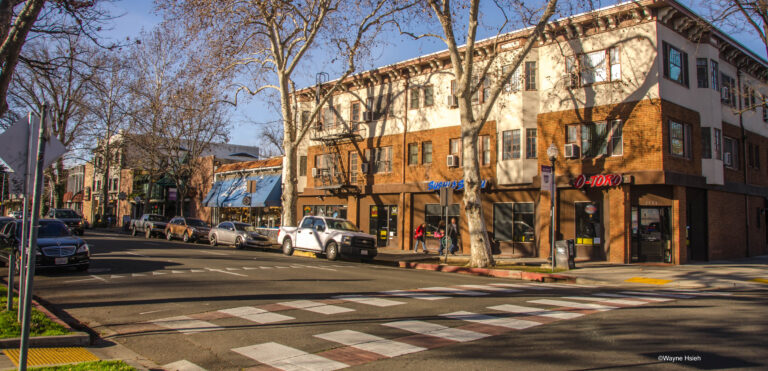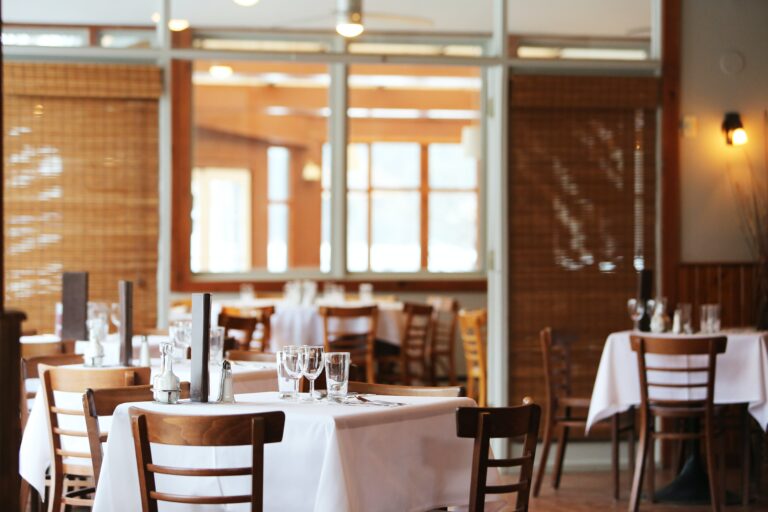Lower costs – not subsidies – spur Sacto’s restaurant scene
By Steven Greenhut | December 22, 2023
When I moved to Sacramento in 2009, the city’s restaurant and nightlife scene was rather bleak. I recall roaming around downtown on an election night looking for an open bar, figuring Capitol staffers would be packed into watering holes celebrating victories or drowning their sorrows. Virtually everything was closed. Aside from a few mainstay restaurants, the city had a government-town vibe where everything shuttered after offices closed for the day.
The heart of downtown still is struggling – the result of COVID shutdowns, window-smashing anti-police-brutality protests and an out-of-control homelessness problem that pushed many restauranteurs out of business. But one needn’t wander far – to the Midtown area or along Broadway south of downtown – to find crowded streets and a booming restaurant trade. Last time I headed to Midtown, my wife and I roamed around looking for a place without hour-long lines. Times have changed.
Perhaps the biggest sign of Sacramento’s success was a recent feature article in The New York Times, which looked at “How Sacramento Turned Into a Great Restaurant City.” It’s not just the number of establishments that caught the newspaper’s eye, but the gourmet quality of the offerings. The article featured a Japanese restaurant, where “diners watched rapt from across the bar as a chef blowtorched a sliver or sturgeon until it was kissed with char.”

This restaurant could have been found in Tokyo, or at least San Francisco. In fact, the City by the Bay has a lot to do with Sacramento’s enviable new status. As the Times pointed out, Sacramento always had the makings of a foodie town. Its ethnic diversity provides supply and demand for a variety of cuisines. And its “farm to fork” status is just a fancy way of saying that Sacramento is located amid one of the world’s most-abundant agricultural regions, where fresh produce always is available.
But the real story is as follows, per the Times: “(I)t took a cadre of young chefs returning or relocating to Sacramento, and a flock of new residents fleeing from punishing Bay Area housing prices, to fully flip the switch.” It’s terribly expensive to operate a business in the San Francisco region, with the high real-estate prices, wage rates and regulatory climate. Relatively affordable housing provides hip young residents with the extra cash to spend on fancy meals.
By national standards, Sacramento isn’t cheap, especially not in the leafy urban neighborhoods that surround most of the new restaurants. But it is cheaper. Even after recent price drops, the median-priced home in the entire Bay Area is $1.2 million. The median price in Sacramento County is $510,000. Commercial rents are far lower than in San Francisco. While the Sacramento government is notoriously bureaucratic, it is better than San Francisco’s.
“There’s nothing complex about any of this. Lower costs provide economic opportunities.”
There’s nothing complex about any of this. Lower costs provide economic opportunities. In “Death and Life of Great American Cities,” renowned urban writer Jane Jacobs argued, “For really new ideas of any kind – no matter how ultimately profitable or otherwise successful some of them might prove to be – there is no leeway for such chancy trial, error and experimentation in the high-overhead economy of new construction. Old ideas can sometimes use new buildings. New ideas must use old buildings.”
She wasn’t reflecting solely on the age of the building (as indeed San Francisco has lots of old buildings), but on the importance of having lower-cost rents to make new ideas possible. Too often, city officials throughout California forget that lesson. They believe the key to providing affordable housing is to build lots of brand-new subsidized housing, which comes with a price tag of $800,000-plus a unit. In reality, cities need to simply allow the construction of all types of new housing, which frees up older homes and apartments for those who can’t afford newer ones.
Regarding downtown restaurants and businesses, Sacramento had previously used its redevelopment agency to subsidize establishments along its decrepit K Street. We’ve seen less of that since then-Gov. Jerry Brown eliminated those agencies statewide in 2012, but the key is reducing regulations and letting the market flourish rather than having city officials select restauranteurs to support. Note that K Street largely remains a no-man’s land, with most of the restaurant energy taking place elsewhere in the city.
When I moved to Sacramento, then-Mayor Kevin Johnson and other officials often blathered about turning Sacramento into a “world-class city.” As I wrote for the Sacramento Bee at the time, “Instead of envying bigger cities, civic leaders ought to talk about ways to create a good school system and fabulous neighborhoods and a vibrant entrepreneurial economy.” Instead of focusing on big projects, I mused, it ought to get out of the way and let individual creativity flourish.

As it turns out, the city’s biggest plans – building a new basketball arena for the Sacramento Kings and dumping subsidies on K Street – haven’t spawned any widespread downtown revival. Across town, individual entrepreneurs have jump-started the restaurant scene to such an extent that even The New York Times noticed. Let there be a lesson in that success.
Steven Greenhut is director of the Pacific Research Institute’s Free Cities Center. Write to him at [email protected].

